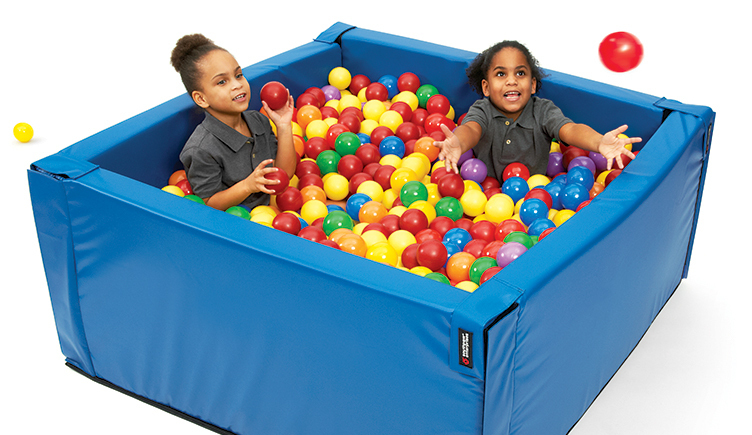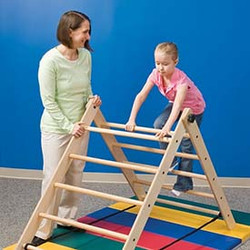When we think about child development, we often don’t put a lot of emphasis on motor planning. However, this is a key component to development. Motor planning is a person’s ability to conceive, plan and carry out an unfamiliar task. Motor planning can be assessed for any skill, such as kicking a ball, forming letters, or navigating a rock wall. When discussing motor planning, we are looking at a child’s ability to complete a task from ideation to execution. In simple terms, it’s the way the brain processes what the body needs to do to perform the skill.
For example, think of a group of children who are all working on developing the skills of kicking a ball. Children who have good motor planning skills are able to walk up and approach the ball and balance on one foot while swinging the other foot to make contact with the ball. Children who lack motor planning skills may approach the ball and lose footing and balance as they try to navigate how to move and hold their bodies to make contact with the ball. The difference between these children is how quickly and easily their brains can process and communicate what they need to do.
Children who demonstrate difficulty with motor planning skills often appear to be clumsy and uncoordinated. When learning a new skill, they may take a lot of time or several trials to even approach the task. These children are often diagnosed with Developmental Coordination Disorder (DCD) and can be treated by occupational therapists.
As with any type of therapeutic intervention, occupational therapists will use a variety of treatment approaches to treat motor planning concerns. Therapists are trained to assess and know exactly how to challenge the child “just right” to improve coordination and motor planning so that they can carry over to other tasks. Oftentimes this is through the use of games and obstacle courses that challenge the body to try to sequence through new skills. Southpaw offers a few key equipment options that are beneficial to addressing motor planning issues.
Transition Climbing Wall

Climbing walls take a lot of higher-level skills, including coordination, balance, strength and motor planning. There are a variety of sizes and setups that help children of different skill levels work hard to learn to master the skills they need.
Crash Pit

In terms of addressing motor planning, crash pits are ideal for helping children learn how to navigate through the ever-changing environment. One creative way to use them is to complete puzzles or multistep tasks by putting pieces around the edges and then having the child climb through the crash pit to obtain them and complete the activity.
Activity Tower

Activity towers offer a variety of configurations to make any therapeutic space beneficial for children of various needs. They have a variety of interchangeable panels so you can design the configuration to suit. Motor planning and coordination are key components addressed while climbing, sliding, crawling, and moving in and out of spaces. From being a princess in a tower to being a pirate on a ship, using this piece of equipment can make any therapeutic activity fun and adventurous.
Motor planning doesn’t have to be so hard, and using the right treatment approaches and tools can help children navigate through new skills with ease.



